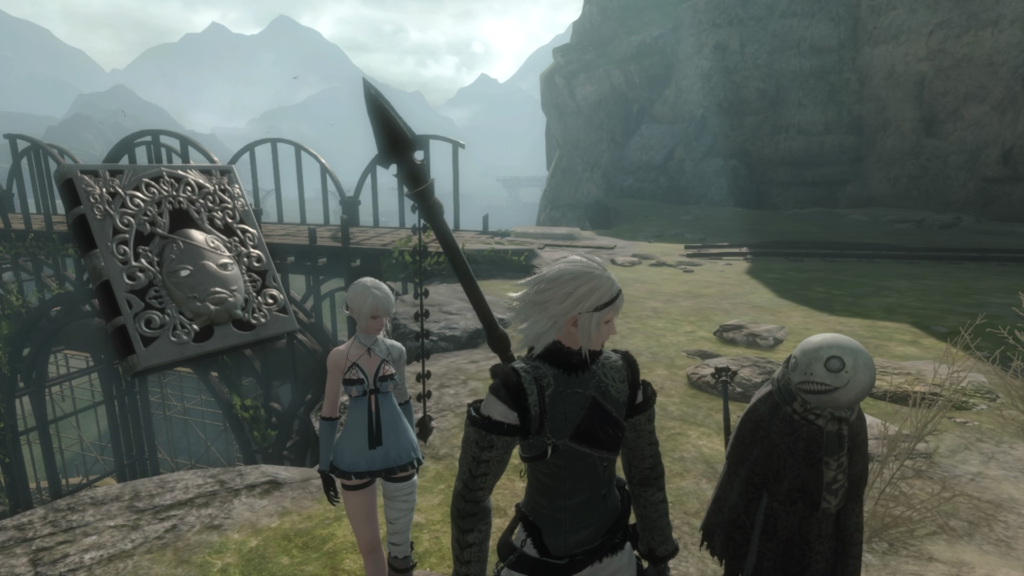
Provided by Square Enix | Screenshot by author
The Replicants and their Friends Between Apocalypses
This piece contains spoilers for Nier: Replicant ver. 1.22…, Nier: Automata, and Drakengard.
For many queer people like myself, family is a fraught concept. Whether kicked out of our homes to fight for survival on the streets or interpersonally stigmatized for our identities, family can be found at the root of too much queer trauma. Found family, the people with whom bonds are formed which either replace or exist alongside those formed with one’s birth family can be affirming, validating, even life saving. As with real queer people, the characters of Nier Replicant ver 1.22474487139… also affirm their senses of self and community through the found family they form throughout the game’s narrative. In fact, Nier is not merely a story of a queer found family surviving. The game takes the risky, yet exciting swing in insisting that in a post-human, post-post-apocalypse, the heteronormative, biological family structure always breaks down and only the found queer community will persist.
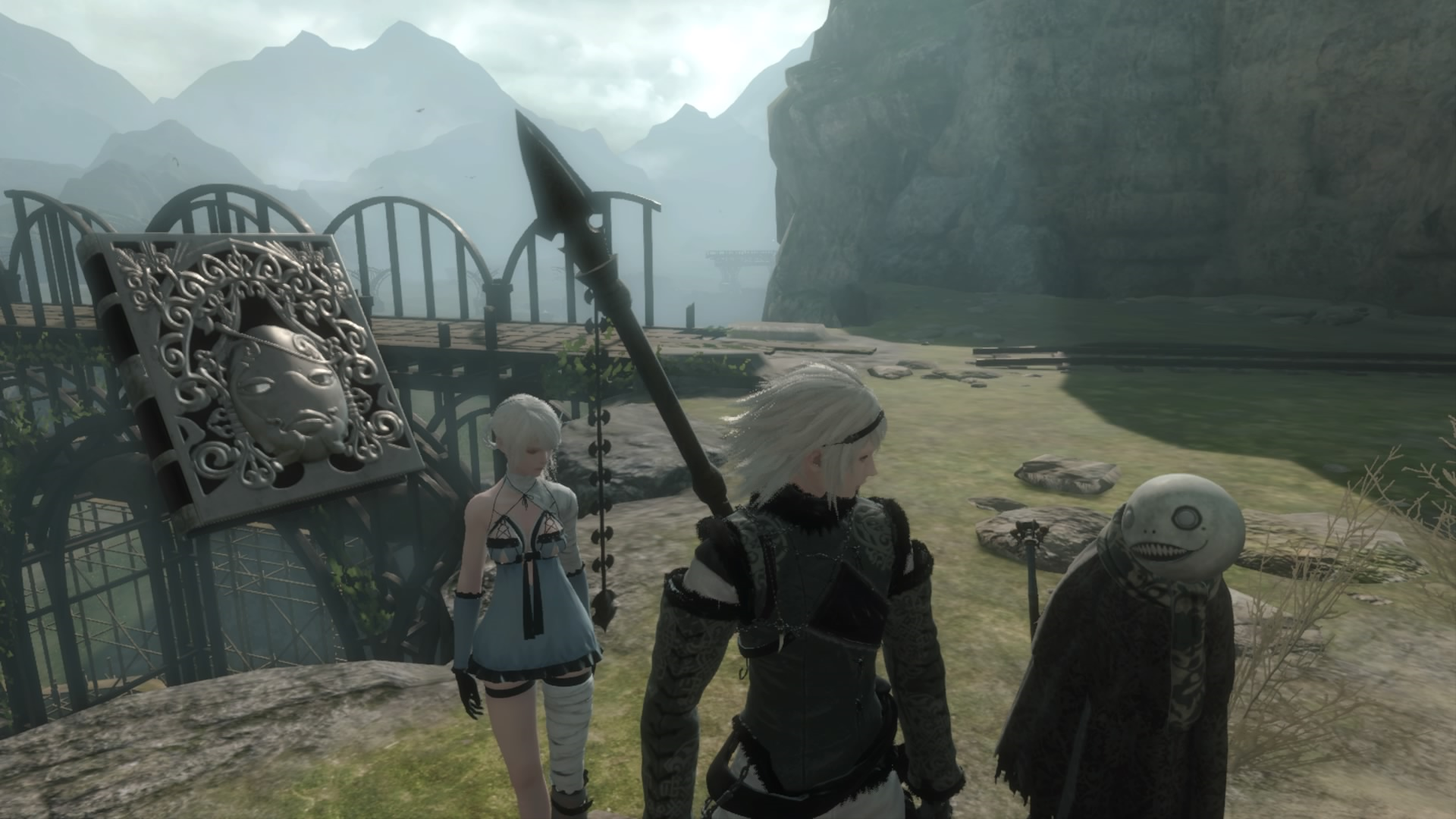
To be clear, I do not think the game positions birth families or heteronormative relationships as harmful. The losses the characters incur are absolutely framed and treated as tragedies. Nevertheless, this pattern reveals Nier Replicant’s argument that as the last vestiges of humanity die away, so too will the heterocentric, nuclear family be left behind and buried. The ties that bond such familial structures never prove themselves strong enough to survive, let alone aid the characters within such structures in achieving their goals.
Kainé’s grandmother, the only source of comfort and support in a village which ostracized her for her intersex body, is taken from her at a young age. In the same moment, her marginalization is compounded by her body being possessed by a Shade. These layers of difference, both physical and supernatural, position Kainé as monstrous.
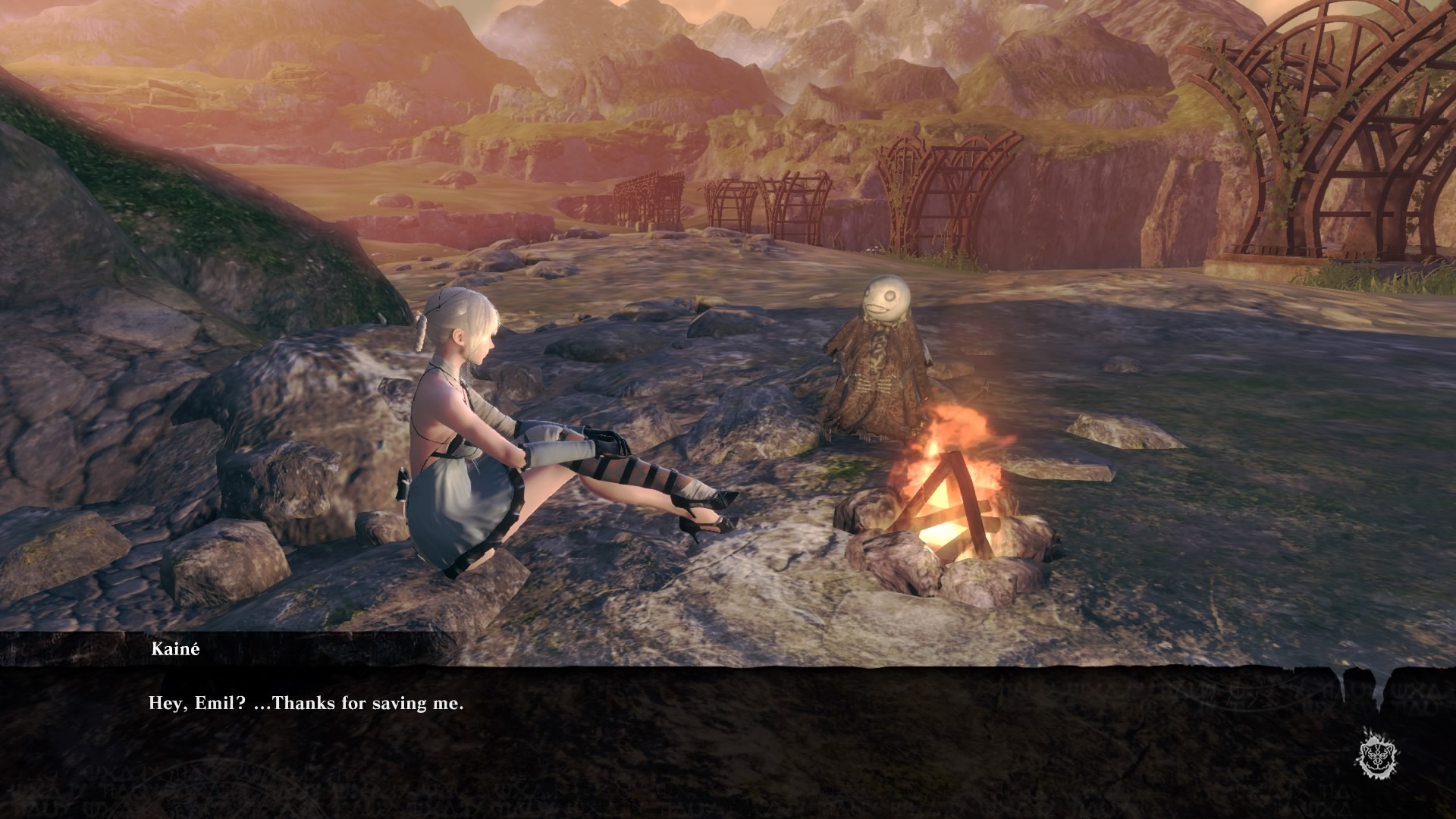
For Kainé, spending nights by the fire with Emil allowed her time not only spent with a queer friend, but with one who knows the pain of being ostracized because of their body. Even more particularly, the pain of ostracizing one’s self because of their body. The people of Nier’s village fear Kainé and Emil. Their bodies are too foreign and their powers are too great. Though it was those very bodies, those very powers which saved the village from a gargantuan Shade’s rampage, the community wants them out. Kainé and Emil, however, are more than happy to leave. The pair are nearly as insistent as those who fear them to sleep outside the village gates, and refuse to enter other settlements like Seafront, excepting matters of life or death.
Separating oneself from spaces in which you will be ostracized is a habit many queer people form, regardless of whether the cause is active hostility or the comforting elimination of the possibility for harm even at the cost of isolation. In joining Kainé in her self-imposed isolation, Emil allows her to be vulnerable; physically removed from their oppressors and emotionally secure in the presence of someone who understands their marginalization.
The narrative of Nier Replicant also implies a possibility for romance between her and Nier, but no timeline allows for it. Endings C and D separate them with Nier killing Kainé after the shade assumes control of her body, or sacrificing his own existence to ensure she survives. Nier may be a modern fairy tale, but there is no heteronormative ever after where the boy gets the girl or vice versa.
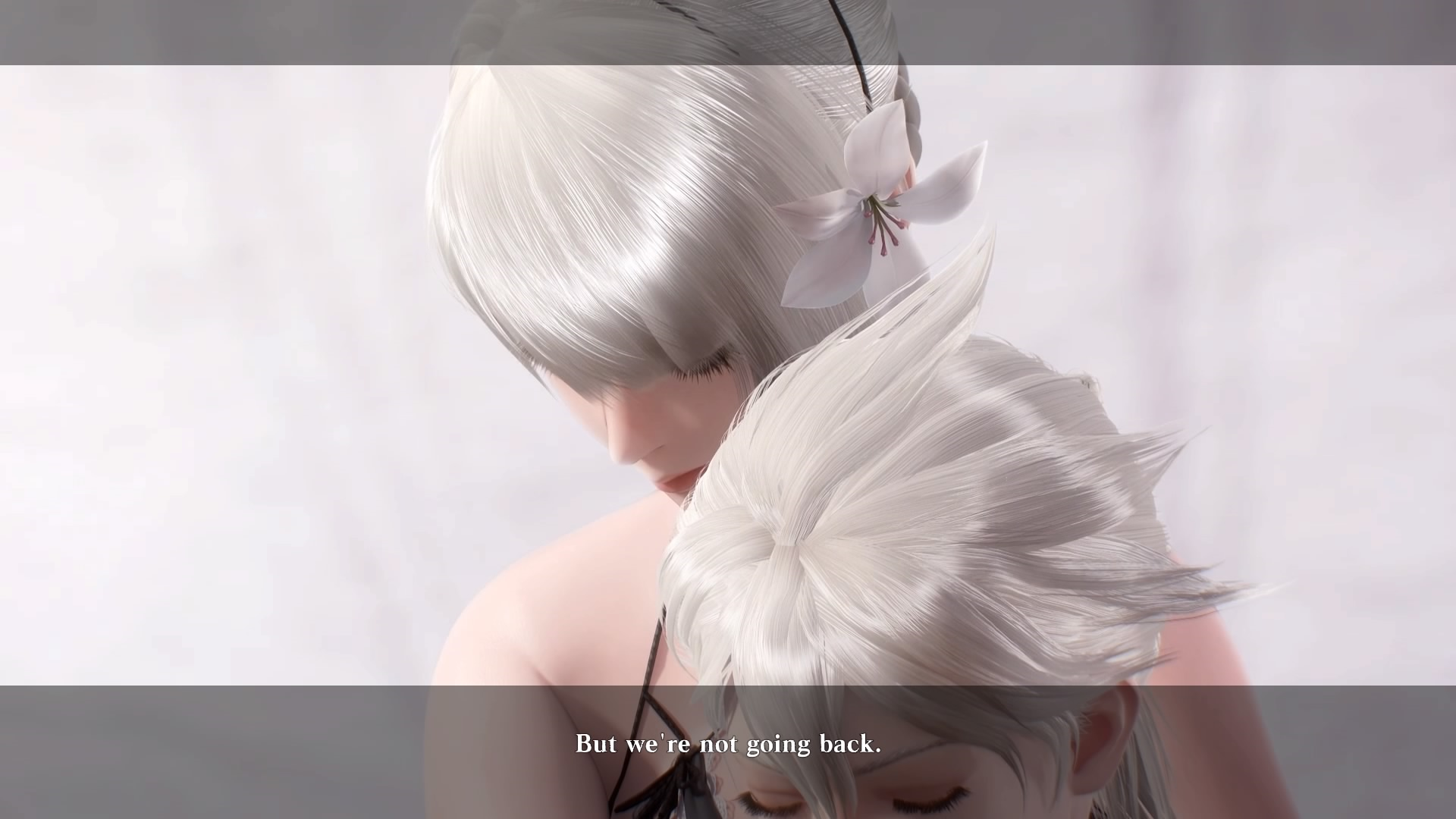
For Emil, the game’s narrative similarly prioritizes his found family over biological or heteronormative relationships. His love for his found family orients him, granting him clarity of self and purpose. After a traumatic metamorphosis renders him terrified of being seen, it is the embrace of his friend Nier which lifts him from despair. It is Kainé’s knowing reassurance that his body is not a sin which taught him pride. It is his squabbling with Grimoire Weiss which lets him laugh in the face of apocalypse. Emil’s love for his found family is a love which would go on to replicate itself infinitely in the millenia between Replicant and Nier: Automata, in spite of the pain of eternity, until the specifics of that love–names, places–were lost, but the urgency never flickered out. The same cannot be said for his birth family. Like Kainé, he loses his sister, his only family, early and in a moment of violent trauma. In lieu of a narrative of reunion wherein he saves her soul from the monstrous weapon into which she was transformed, Nier insists on keeping the siblings together, yet apart. Emil fuses with his sister’s body, but in doing so says one of two final goodbyes to her.
The pattern repeats. Poppola must watch her sister struck down by her friends. Louise fails in becoming an adoptive daughter to the Seafront postman and perishes. The ferryman is killed to his wife’s despair. The King of Facade marries Fyra and is immediately widowed. Wherever the roots of heteronotmative, nuclear families begin to grow they are promptly ripped out. Even Nier’s quest to save Yonah, the propelling force of the narrative, only ends in their reunion in the timeline that takes Kainé’s life in exchange. Otherwise, Nier vanishes into little more than a familiar feeling at the sight of a flower, leaving Yonah forever. Even when Kainé reengineers reality to bring him back, Yonah is neither seen nor mentioned in the finale. The focus in entirely on the recovery of Nier, Kainé, and Emil’s queer found family. Nier is even resurrected as a child, not repositioned as a romantic interest with which Kainé might form a heteronormative relationship.
Nier’s prioritization of queer found family over birth or heteronormative ones is messy and I love it. Nier needn’t bother with a queer-coded villain, when the protagonistic RPG party of queers are the ones who fast-track the human race to its coming extinction. Humanity’s fate is mostly sealed when Nier slays the Shadowlord, but Kainé manages to jam her heel in humanity’s last chance for the sake of bringing Nier back in Ending E. While my reading of how the game prioritizes queer found family can be affirming regarding the power of queer solidarity, it can also be read as inherently threatening to the survival of all of humanity. By the same token, though it is a queer found family that triggers yet another apocalypse, in doing so, jumpstarts some form of rebirth signaled by the giant flower holding Kainé and Nier in the final scene of Ending E. The Drakengard-Nier franchise is nothing if not one that self-contradicts, but it is in the dancing around of those ideological circles (like the repetition applied in both gameplay and narrative), that revelations emerge.
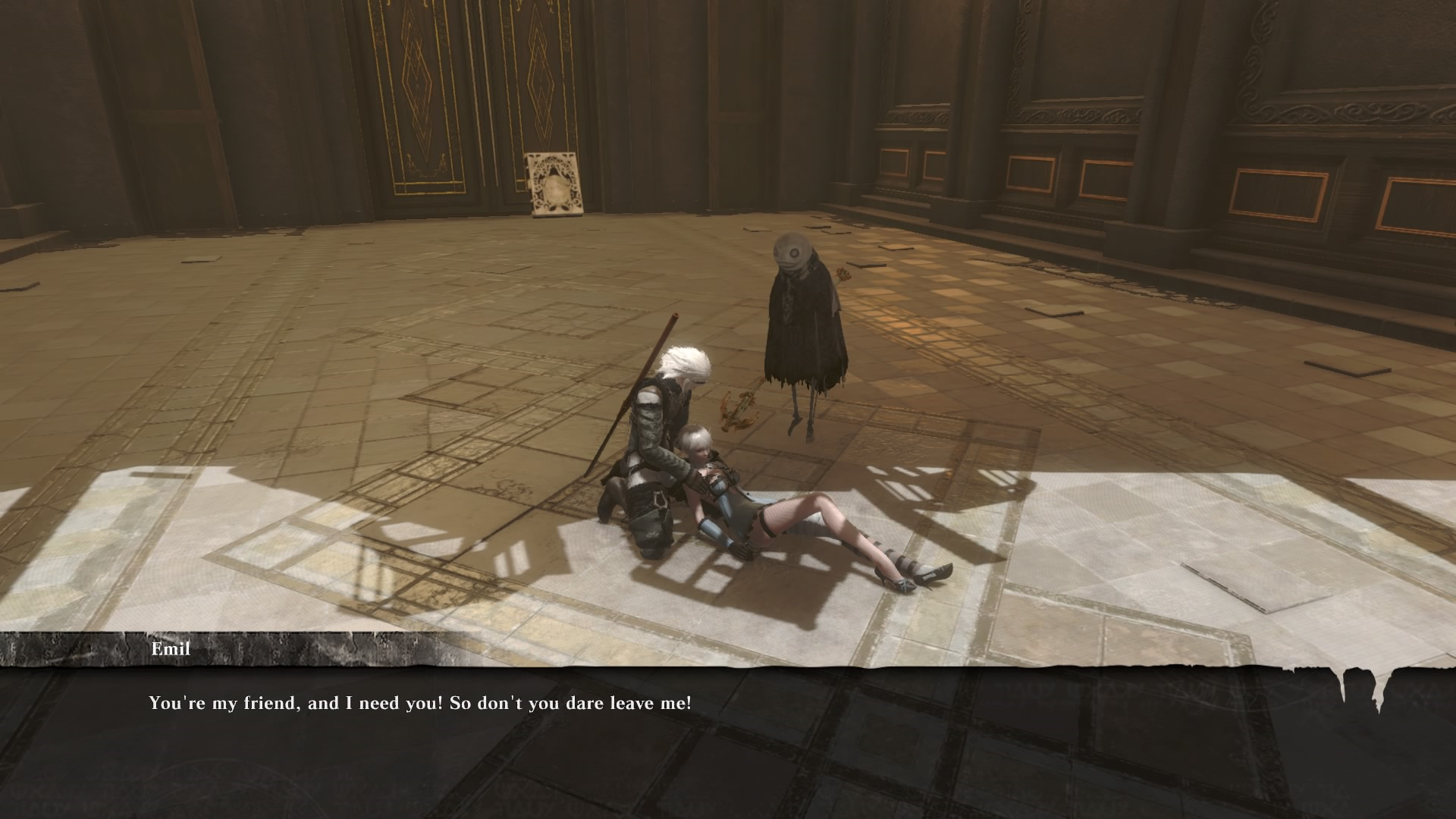
While I don’t think the use of queerness or found families in Nier Replicant are anywhere near as transgressive as the elements employed in Drakengard, it excites me to see Nier continue the tradition of taking big, risky swings and seeing what resonates. What’s more, unlike in Drakengard, Yoko Taro and the writing team didn’t present queerness in Nier to shock the player, instead developing multidimensional characters with nuance and contradiction and heart. I want more stories with queer characters who are selfish, who make consequential mistakes, who damn the world to seize whats theirs after so much has been taken from each of them all throughout their lives. The phrase “let queer people/art be messy” is troubled with the privilege of who is allowed to be messy either in their behavior or in the art they make, but at least within fictional worlds, I want queer stories to be free from justifying—or even explaining—themselves to straight audiences.
Regardless of audience, while I cannot say I’ve completely lost interest in seeing my experiences represented in games, as I get older, I find myself discontent with representation alone. Even if the ideas at play are messy, or position queer characters and experiences in both positve and negative lights, I’m infintiely more interested in creators taking those risky swings. I’d rather a queer found family jumpstart an apocalypse for the sake of keeping eachother close, than have them flattened into easily acceptable, assimilationist representations primed for mainstream consumption.
As ever, there is a wealth of queer art by queer creators on itch.io making the big narrative swings I crave. However, as I reflect on the year and mainstream, big budget blockbuster games, I am relieved stories like Nier Replicant ver 1.22… are being invested in and produced. Even if Nier Replicant remains one of the few AAA games willing to experiment with form, genre, and queerness, it excites me that the industry at large is willing to engage with those stories at all. Do not mistake my excitement for comfort or congratulations. I bear no hope for the triple-A games industry to feed me more than crumbs of queerness ironed out to assimilate first, return on investment second, and deviate rarely. I am nevertheless thankful that whatever mark of “legitimacy” mainstream success offers was this time granted to a messy story of a foul-mouthed intersex swordswoman; a gay skeletal mage whose kindness outpaces his fear; a condescending, yet caring talking book; a man who would give everything for them; and the family they would give the world to protect.





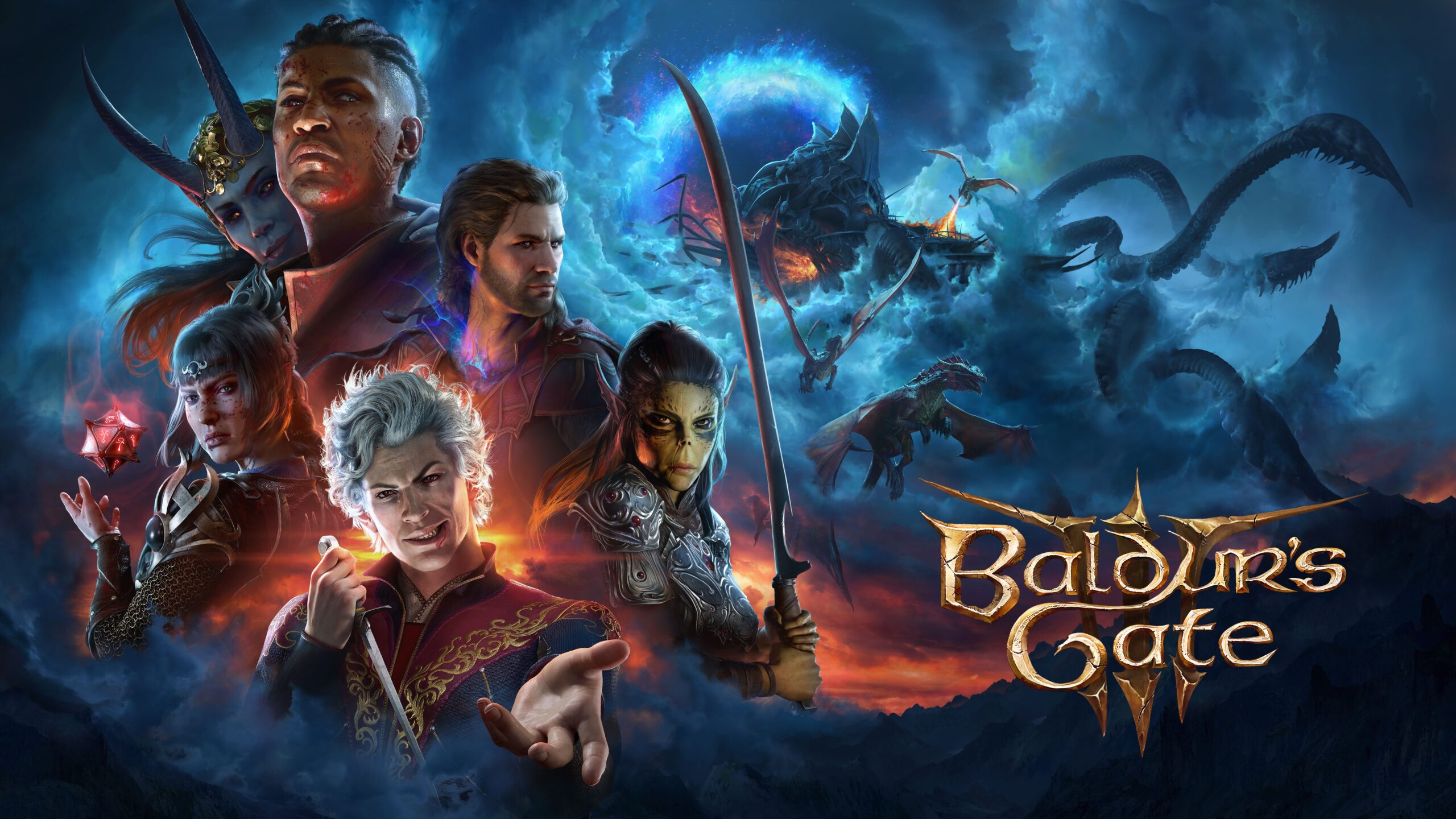
2 thoughts on “The Replicants and their Friends Between Apocalypses”